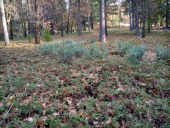Ben Gorski wrote:It has medicinal uses as tea. what else do you want to plant in it's place?
Some plant will have to grow there lest another out-competes it.
If it tastes anything like it smells. I'll pass on the tea.
If you cut it back it takes about 12 monrhs for it regrow. I've also found if you attack the root system enough it will slow its regrowth and grasses and wildflowers can start to reestablish.
The roots break fairly easily and that's what makes it hard to eradicate.
If it wasnt for the mountain misery, the hill would probably be covered in grasses and wildflower 4 to 5.moths s year.
It served its purpose after the logging. The hillside is still place and it kept lots of small trees from popping up, by choking out almost everything but the manzanita.








